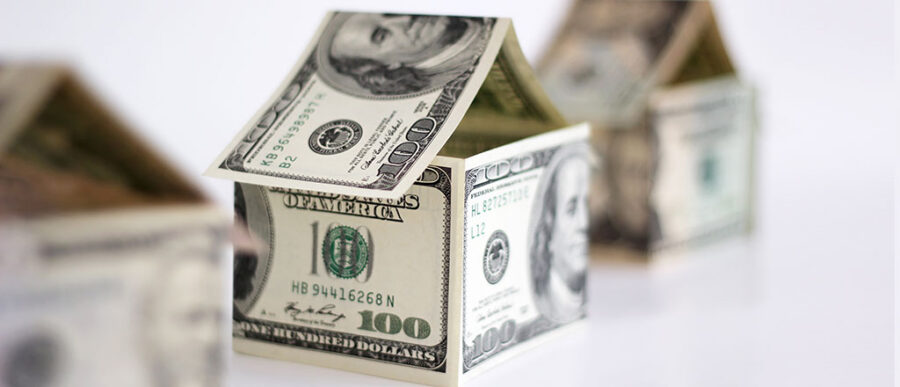American households have most of their wealth in retirement savings (33%) and in their home equity (29%). Of that, home equity exceeded $25 trillion, according to latest Federal Reserve data. Not surprisingly, homeowners with mortgage debt are loathe to give up their homes in foreclosures and may defy financial logic to avoid defaulting on their loans.
Recent research on mortgage defaults show that home loan borrowers often continue making mortgage payments even when they are severely underwater, where the loan amount exceeds the value of their home. “Homeowners place a very high value on staying in their homes, sometimes at great cost to them by continuing to make mortgage payments, throwing good money after bad,” said Wharton real estate professor Benjamin Keys. In addition to the financial cost of defaulting, borrowers also face “a moral component” in terms of a stigma attached to defaulting and moving costs, he explained.
Naturally, homeowners are averse to posting their homes as collateral. For the first time, a research paper titled “The Cost of Consumer Collateral: Evidence from Bunching” by experts at Wharton and elsewhere has captured the degree of that aversion among homeowners to post their homes as collateral. Keys co-authored the paper with Benjamin L. Collier and Cameron Ellis, both professors of risk, insurance, and health care management at Temple University’s Fox School of Business; Collier is also a Wharton research fellow.
Determining that degree of “collateral aversion” is not possible from data on mortgage debt because most home loans require collateral in some form, noted Keys. He put that in context: Roughly 80% of all household debt in the U.S. is collateralized, and real estate secures about 90% of these loans.
The researchers overcame that hurdle by finding a useful proxy in data from the Federal Disaster Loan program, which provides subsidized loans to households that have experienced a natural disaster (e.g., hurricane, tornado, wildfire) towards the repair of damage to their primary residence and the replacement of destroyed belongings. Under the program, those who borrow more than $25,000 have to post their primary residence as collateral. “This unique setting works as a perfect quasi-experiment for isolating homeowners’ value of collateral,” Keys said.
Degree of Collateral Aversion
Analysis of the Federal Disaster Loan program data showed “how much borrowers hate posting collateral,” Keys noted. The research found that 30% of all borrowers “bunched” at the uncollateralized threshold of $25,000; loans bigger than that required them to put up their homes as collateral.
The analysis estimated the median degree of collateral aversion at 40%: When the threshold is $25,000, half of borrowers who were eligible to borrow $40,000 borrowed only $25,000, giving up $15,000 in subsidized credit. “Even homeowners who are currently underwater – and wouldn’t lose any equity if they defaulted – commonly bunch at the uncollateralized threshold,” Keys said. “The financial costs of default and the moral costs of default are the same regardless of collateral use, so the only thing that varies at the threshold is the fear of being kicked out of their homes.”
The data covered three periods of the Federal Disaster Loan program between 2005 and 2018, during which the maximum loan amount without collateral grew from $10,000 to $25,000. For the 2014-2018 period, 33% of borrowers opted for a $25,000 loan, even though many qualified for substantially larger subsidized loan amounts.
“Homeowners place a very high value on staying in their homes, sometimes at great cost to them by continuing to make mortgage payments, throwing good money after bad.” –Benjamin Keys
“Adding up collateral aversion for all the bunchers, we estimate that borrowers have given up over $1.1 billion in subsidized credit from this federal program in order to avoid posting collateral,” Keys said. “That’s a lot of cheap credit forgone.”
Keys clarified that just because 33% of borrowers bunch at the threshold, it doesn’t mean that others aren’t reluctant. “It’s simply that the benefits of collateralizing outweigh the costs of bunching by taking a smaller subsidized loan.”
The paper also found that default rates fall 35% when the loans are collateralized. “That large magnitude is similar to improving someone’s credit score by 100 points in terms of predicted default,” Keys said.
Takeaways for Policymakers
One takeaway from the paper for policymakers is the option of differentially pricing collateralized and uncollateralized loans. “In a private market, we would expect competitive forces to require lenders to offer consumers something in return for posting their home as collateral,” said Keys. “Given the large differences in default we would expect that lenders could afford – on a risk-adjusted basis – to lower the interest rate for those who post collateral. This is what you would expect, if it’s easier to collect on the debt then expected losses from lending would decline and interest rates would fall.”
But in the Federal Disaster Loan program, borrowers don’t get anything for posting their homes as collateral, so in essence they are cross-subsidizing riskier borrowers who do not post collateral, Keys pointed out. “One approach policymakers could take would be to give an interest rate reduction and lower the borrowing costs for those who collateralize their loans. This would encourage more people to post collateral – reducing bunching – and lower defaults in the program even while giving larger loans. It could be a way to more accurately price risk and potentially bring more people into the program.”



